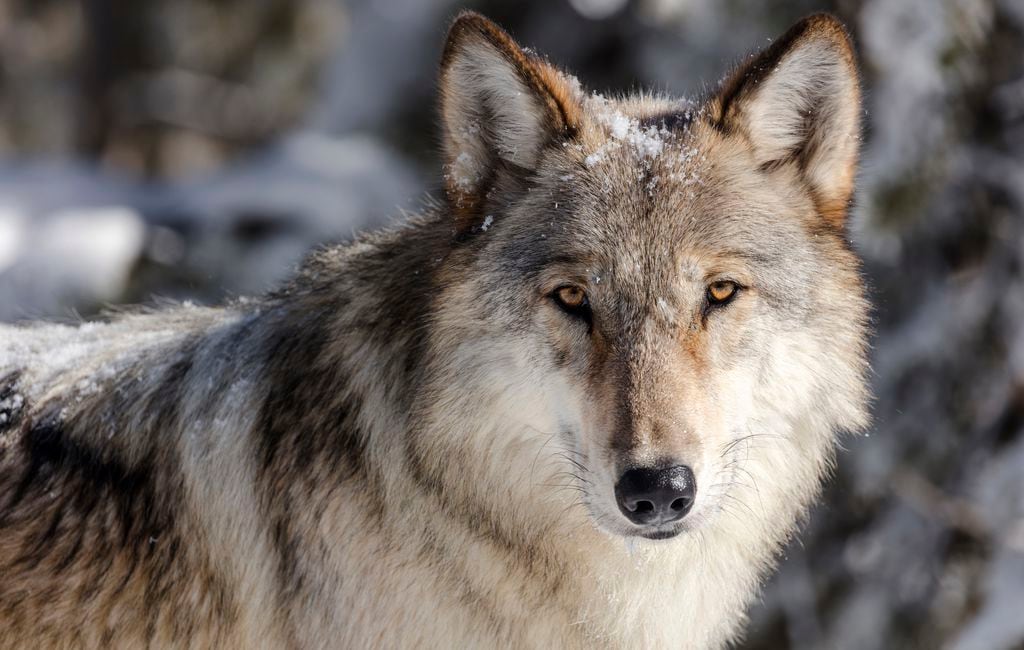I am a responsible Idaho hound hunter and I have great concerns about trapping in the state of Idaho. I believe that it is time to address the elephant in the room and I feel that we need to make some major adjustments to trapping before it is too late for both trappers and hound hunters.
Here are the facts:
* Trapping and dog hunting do not mix.
I purchase my hound tag every year just like the trapper does, but I cannot hunt year round for fear of having another dog lost to a snare. I, myself, have even been caught in a snare just looking for my dogs. This is how out of control trapping has become.
* No regulated limits to the number of snares, leg hold traps and conibear traps on the ground. Collateral damage to wildlife.
A typical snare runs around $2.25 per snare. Most trappers put out so many snares that they have to put ribbons on bushes to find them again. Every day, a variety of wildlife falls victim to the trapper’s collateral damage list. When I buy a deer tag, I fill that tag only once and I know that it is against the law to bag another deer. The trapper has a free pass to kill or maim unlimited amounts of deer, cougar, bobcats, elk, moose, rabbits, etc. as needed to obtain his target. These are only considered “untargeted incidentals” and remain very legal.
* Domestic dog owners.
Hundreds of people recreate with dogs in the state of Idaho. Most trappers trap where it is easy to get to their traps – along highways, roads or trails. This always puts domestic dogs at risk when one is recreating, walking or just letting the dog out to relieve himself.
Hundreds of dogs are killed every year that belong to domestic dog owners. We are all being held hostage by this loosely regulated sport that has absolutely no oversight or consequences for breaking what few laws they may or may not follow.
* No limits on number of animals caught except otter and beaver
The bobcats have suffered terribly due to a five-month trapping season that makes it legal to trap virtually everything when in fact the bobcat season is only two months long – another pass for the trapper. Now with wolf trapping, bears are being caught in November before they can even go into hibernation. Trapping to this degree is affecting everything.
* New residents and so called “bunny huggers” dominating Idaho
There are 1.6 million people in Idaho with only approximately 2,000 trapping licenses issued. How long do you think it will take for people to realize that they can not safely recreate with dogs because of trapping? How long will they tolerate the inhumane treatment of animals and suffering that all victims of the snare or trap must endure?
This is slowly turning into a state that is leaning toward ethics. Numbers have always taken precedence over history and heritage. I worry that the dog hunting will go out the door along with the trapping if we don’t find some balance for everyone.
* Trap damage
Bone damage, tissue damage, blood vessel damage, skin and nerve damage or in most all cases … death. Even if one of my dogs survived, it would never be able to hunt again.
My recommendations:
* Outlaw conibear traps set on dry land.
These traps kill instantly and have no business being set where humans interact with wildlife and nature. In most states, they can only be used under water. The average person can not even release a pet much less themselves without special hardware for one of these monsters.
* Outlaw snares.
Snares are unforgiving to all animals. They are not only cheap to buy, but are 100 percent effective and can be set over an unfathomable amount of area – catching almost anything that is moving, either in or out of season. Because of the unfair and indiscriminating amount of collateral death caused to wildlife while trying to catch targeted animals, they should never be legal due to this factor alone.
* Limit the amount of traps a person can set.
Change the 72-hour torture check to 24 hours every day. This would make a trapper think twice about laying out 80 to 100 traps and just letting them ride till the weekend (which is what most of them do because they work). Legally, he would have to think about the time involved in checking traps within a 24-hour time frame. Because there is no oversight, most of them get away with this anyway, but at least it would be illegal.
* Limit the number of animals to be caught.
This sport has turned into a killing free-for-all. There are limits on everything else we value with hunting. Why not for the trapper?
* Require trapper liability insurance.
The people who illegally snared and killed my $5,000 young hound didn’t appear to have any remorse. After the incident, it was business as usual with just a slap on the wrist. I was the one who suffered the emotional and financial loss from their negligence, but they were well within most of the trapping laws.
There has to be some accountability to protect the average person who recreates in our woods and wetlands. They should be able to freely use these public lands without fear of losing their dogs. The rules can’t always be overwhelmingly in favor of the trapper or it will come to an end. Trappers would be more mindful of where they trap if they were required to have trappers insurance.
* Raise the license fees to trap.
If Fish and Game can not afford to patrol and control trappers, maybe they should consider raising the fees to put some balance out there for the rest of us when it comes to recreating together. This would cut down unnecessary kills and keep the till full.
* Require only “live” traps.
This would really solve the problem. There could then be some control as to what should or shouldn’t be taken. I know this would be a hard pill for the trapper to swallow, but we need to find a way to level the playing field for the common man. Other states do this with much success and everyone is happy, not to mention this leaves a larger abundance of wildlife for others to pursue such as myself. Needless killing of fur bearers is never a good idea for wildlife populations or for anyone.
In Conclusion:
My thoughts are not new with regard to trapping in Idaho. I have watched what I dearly enjoy doing go down the drain in the St. Joe country. Trappers gobble up what little bit of country is left that supports the lion or bobcat populations. There is no such thing as working side by side with snares and conibear traps when you do what I do. The trapper has had it pretty good doing whatever he has wanted to do on our public lands for decades, but this isn’t going to last – not with the new mindset of the people who are moving into this state. People love their dogs and they are concerned about animal suffering, but there are still solutions that could happen to make everyone happy.
Earlier this year, a mother, her 12-year-old son and their large dog were looking for antler sheds near Kellogg. The dog was trapped and died in an unmarked conibear trap that neither of them could open. There was nothing the boy could do but watch his dog die. Turned out this trapper was found when he returned for the trap, but he only received a slap on the wrist for not marking the trap. He went on to use the conibear trap up Cougar Gulch near Cd’A where he also trapped and killed two more domestic dogs. Fish and Game could do absolutely nothing about these incidents because he was well within the law. This is nothing short of insufferable.
How long will it be before a 12-year-old boy loses his foot in one of these monster traps? How many more domestic dogs will be victim to a snare, leaving their grieving owners wondering about what their rights are on public lands? This has to change or the power of the people will bring it to an end – and I am afraid they will take down dog hunting while they are at it.
We have to make laws so everyone can enjoy these lands together. There needs to be compromise on everyone’s part. No one sport should be able to dominate and hold everyone else hostage while they willy nilly do whatever they want without facing consequences. We need some drastic steps and changes made with regard to trapping – and we need it done soon.
K. Brown is a resident of Plummer.



 Traps Are a Safety Hazard on Public Lands
Traps Are a Safety Hazard on Public Lands
